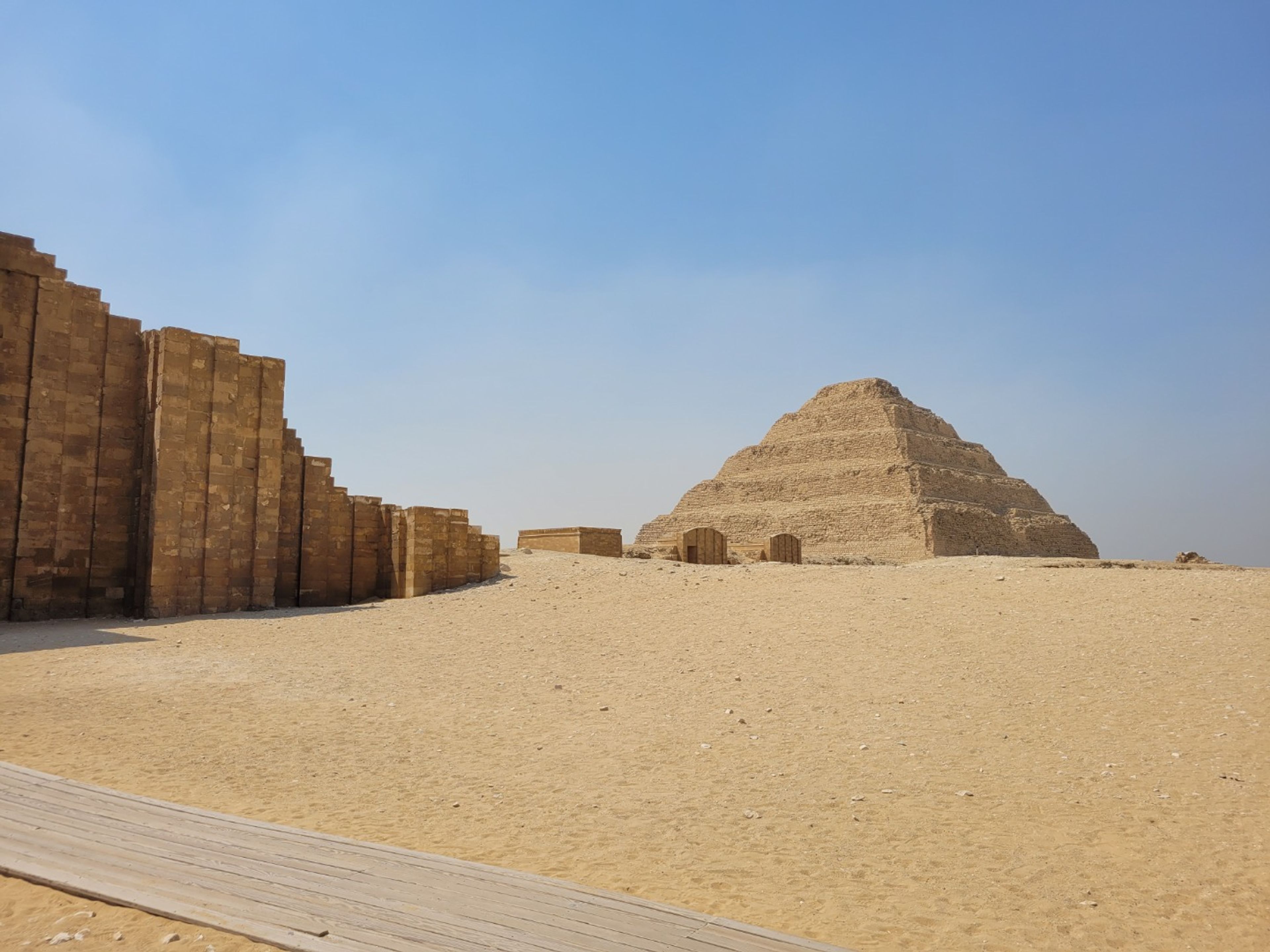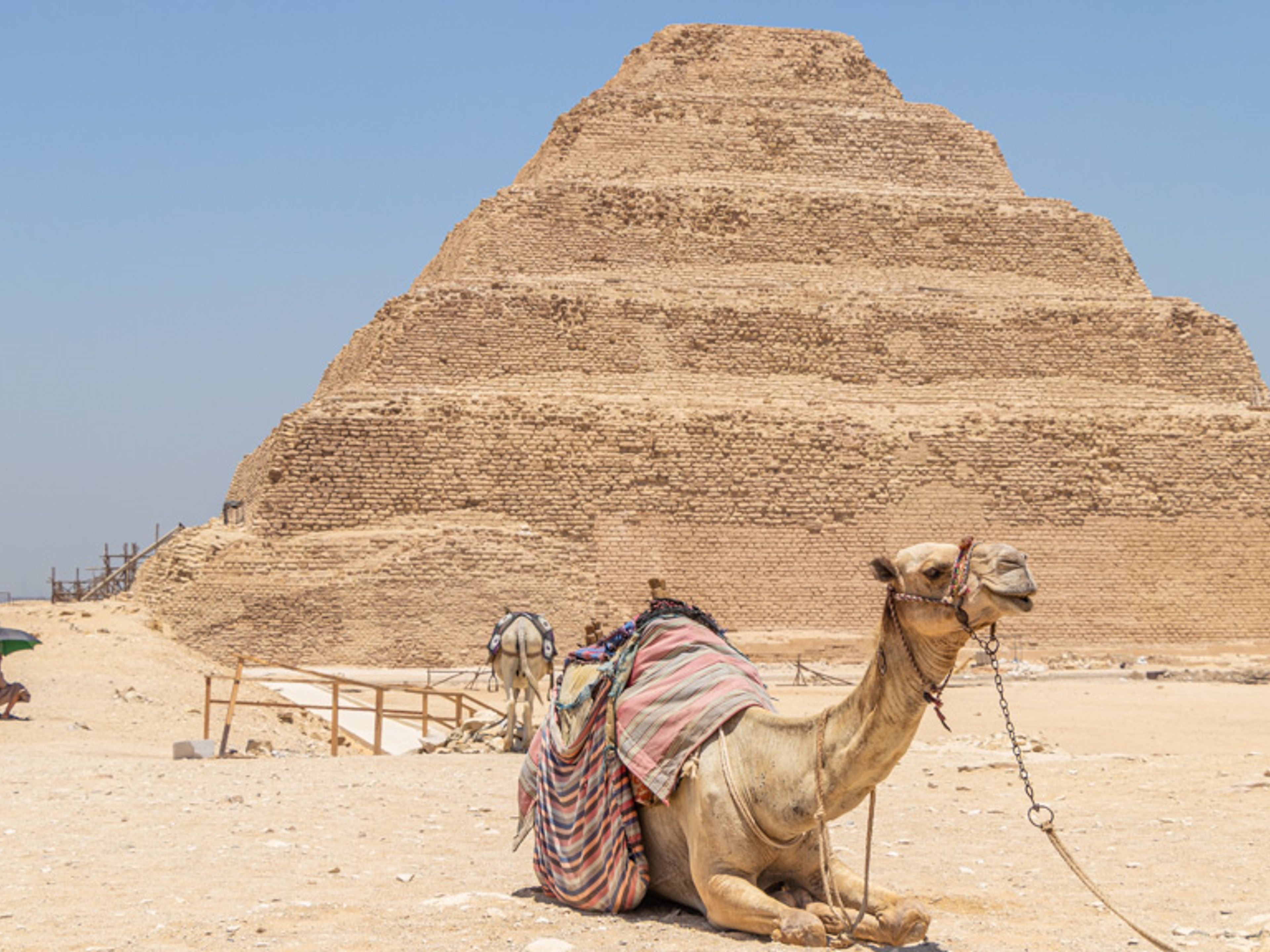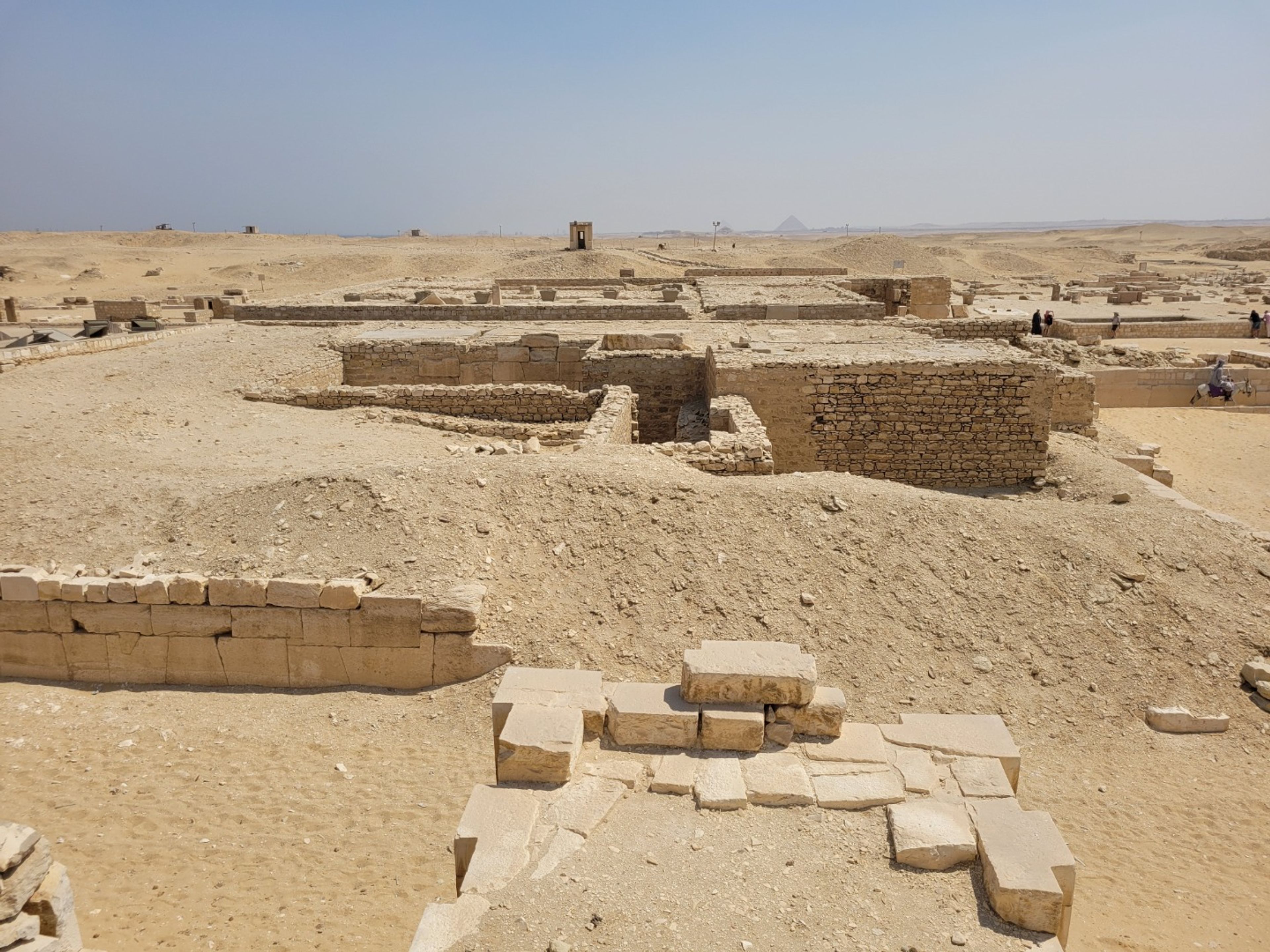- Home
- Day Tours
- (SAKKARA) SAQQARA
- "FULL DAY TOURS IN CAIRO (THE STEP PYRAMID COMPLEX OF DJOSER AT SAQQARA - MEMPHIS - PYRAMIDS OF DAHSHUR)" Private Tour
"FULL DAY TOURS IN CAIRO (THE STEP PYRAMID COMPLEX OF DJOSER AT SAQQARA - MEMPHIS - PYRAMIDS OF DAHSHUR)" Private Tour





"FULL DAY TOURS IN CAIRO (THE STEP PYRAMID COMPLEX OF DJOSER AT SAQQARA - MEMPHIS - PYRAMIDS OF DAHSHUR)" Private Tour
MEMPHIS OR MENFIS, Just 20 kilometers southwest of the Giza Plateau lies Memphis, the first capital of Ancient Egypt — a city steeped in myth and glory. Founded around 3000 BC by King Menes, the legendary ruler who unified Upper and Lower Egypt, Memphis became the beating heart of the ancient kingdom, a powerful political and spiritual center dedicated to the god Ptah, patron of craftsmen and architects. Today, the open-air museum of Mit Rahina preserves the memory of this glorious city, displaying magnificent statues and colossal sculptures, including an awe-inspiring fallen colossus of Ramses II, which captures the grandeur and artistry of Egypt’s golden age. The city was known by several names that reflected its power and divinity — Inb-hd (“The White Wall”), Mn-nfr (“Stable and Beautiful”), and Mt-Rhn (“The Way of the Rams”).
For more than eight dynasties, Memphis flourished as the political, cultural, and spiritual center of Egypt. It was the seat of the Memphis Triad — the god Ptah, patron of artisans and architects; his consort Sekhmet, goddess of power and healing; and their son Nefertem, god of rebirth and beauty. The creation myths of this divine triad placed Memphis at the center of the world’s birth, where the god Ptah was said to have spoken creation into existence. Within its vast borders lies the legendary Memphis Necropolis, the largest and most celebrated burial site in Egypt, home to monuments and tombs that honor kings and nobles from nearly every era of ancient history. Even Alexander the Great paid homage to this sacred land during his lifetime; after his death, his mother was said to have lain here until her final resting place in Alexandria was complete. Many of the Ptolemies who later ruled Egypt adopted the name of Ptah within their own royal titles, further reflecting the city’s enduring spiritual significance. In 196 BC, the priests of Memphis gathered to honor King Ptolemy V, expressing their gratitude through decrees that were engraved in hieroglyphic, demotic, and Greek on the world-famous Rosetta Stone — discovered in 1799 by Napoleon’s scholars during the French expedition in Rosetta. This priceless artifact became the key to unlocking the secrets of ancient Egyptian writing and culture.
SAQQARA — The Eternal Necropolis of Ancient Egypt: Journey into the sacred sands of Saqqara, one of the most extraordinary archaeological treasures in all of Egypt. Located west of the ancient capital Memphis and just south of modern-day Cairo, Saqqara served as Egypt’s principal necropolis for more than three millennia — from the dawn of the First Dynasty through the Christian era. Every step across this timeless plateau is a passage through history, where the earliest kings, nobles, and priests sought eternal rest beneath the desert’s golden light. Dominating the landscape is the magnificent Step Pyramid of King Djoser, the oldest known pyramid in the world and the earliest monumental stone structure ever built. Designed by the genius architect Imhotep during the Third Dynasty, this revolutionary monument marked the beginning of Egypt’s grand architectural legacy, paving the way for the later pyramids of Giza. Its unique tiered design, rising in six majestic steps toward the sky, represents humanity’s first great attempt to reach the divine through stone. Saqqara is much more than a cemetery — it is a spiritual landscape, a bridge between earth and eternity. Perched on the edge of the Libyan Plateau, it overlooks the lush Nile Valley, standing as a timeless guardian between life and afterlife. Even today, visitors can still experience moments of profound silence and solitude, untouched by the bustle of the modern world — a sacred stillness that once inspired priests, builders, and pilgrims alike. This hallowed ground was placed under the protection of Sokar, the ancient god of the underworld and resurrection, whose presence was believed to guide souls through their journey beyond. Here lie the tombs of Egypt’s first pharaohs, their burial chambers hidden beneath mudbrick mastabas adorned with the elegant “palace façade” — a style that symbolized both royal authority and divine power. Beyond Djoser’s Step Pyramid, Saqqara reveals an endless array of wonders: the Pyramid of Teti, the Mastaba of Kagemni, richly decorated tombs of nobles and high officials, and countless funerary temples and galleries that trace the evolution of Egyptian art and belief. Each wall painting, each hieroglyph, whispers stories of kingship, ritual, and the eternal quest for immortality.
Guided by our expert Egyptologists, you will discover fascinating secrets, myths, and architectural details that transform these colossal structures into a living story carved in stone. Every block, every angle, every shadow speaks of a civilization that changed the course of history and left us an unparalleled legacy. This visit offers a rare opportunity to trace the evolution of Egypt’s monumental architecture, from the earliest experiments in stone building to the perfection of the pyramid form — a timeless symbol of human genius and divine aspiration.
Itinerary
-
Pick up at your hotel, or the one closest to your accommodation by a guide from our agency.
-
Visit to the Step Pyramid Complex of Djoser at Saqqara.
-
Visit to the old city of Memphis.
-
Visit to the Pyramids of Dahshur.
-
Return to the hotels.
-
All visits to the different facilities and museums have the presence of a specialist who will guide our tour, explaining in detail the meanings and history of the different attractions that we can observe.
The tour includes
- Spanish-speaking guide service.
- All transfers from and to the hotel in modern, air-conditioned private coaches.
- All information on all the aforementioned visits.
- Special treatment and elite service.
The tour does not include
- Professional guide in English, French, Portuguese, German and Italian languages. If you want a guide in these languages, it is done on request and an extra charge must be paid.
- Extras not mentioned in the program.
- Personal expenses and tips.
- Lunch and drinks during visits.
• It is recommended to wear light clothing, sunglasses, caps or hats, sneakers or sandals, sunscreen, and a camera. • It is recommended to bring at least a bottle of water, light meals with sweets, and snacks.
More Information
- 6 hrs aprox
- 08:00 hrs
- Tour guide included
- Family friendly
- Offered inSpanish
Options and Availability
Private tour (from 2 to 5 pax)
Private tour with exclusive guide service in your language. Pick-up time and itinerary tailored to your interests.Private tour (from 6 to 20 pax)
Private tour with exclusive guide service in your language. Pick-up time and itinerary tailored to your interests.Policies and Conditions
- This tour operates with a minimum of 2 passengers, Holiplus will reconfirm 48 hours before departure. If the supplier decides to cancel, for reasons of force majeure or adverse weather conditions, Holiplus will offer an alternative tour or will fully refund the cost of your trip.
- Rates are expressed in US dollars (USD) and may be changed without prior notice.
- The services and programs can be changed or canceled in their execution, sequence and content; in order to offer a better service, or due to extreme conditions or force majeure reasons.
- The client must be aware that modifications in the original reservation may generate changes in the final price.
Cancellation and no show policy:
- Cancellations more than 72 hours before the excursion: No penalty applies.
- Cancellations between 72 hours and 48 hours before the excursion: a penalty of 25% of the total value of the excursion applies.
- Cancellations less than 48 hours before the excursion: a penalty of 50% of the total value of the excursion applies.
- NO-SHOW: a penalty of 100% of the total value of the excursion applies.
- Reservation fees and credit card surcharges cannot be refunded in case of cancellation.